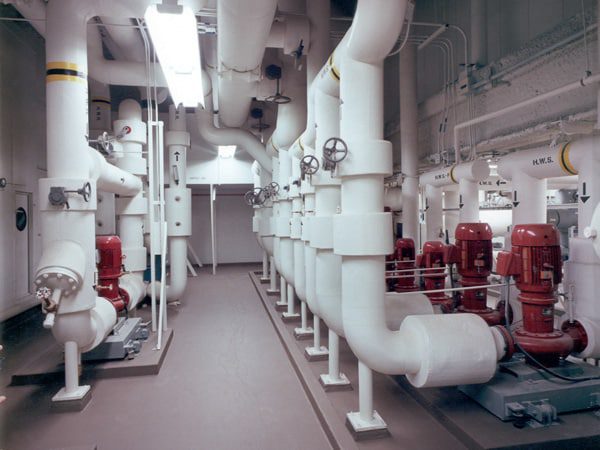In the dynamic landscape of construction, the significance of insulation cannot be overstated, and accurate estimation plays a pivotal role in ensuring optimal energy efficiency and cost-effectiveness. While conventional insulation estimating services have long been relied upon, the industry is evolving, demanding a shift toward advanced techniques. This article, titled “Beyond the Basics: Advanced Techniques in Insulation Estimating Services,” delves into the transformative realm of cutting-edge methodologies, exploring the utilization of innovative software, data-driven approaches, and customized solutions.
Brief Recap of Basic Insulation Estimating
Insulation estimating, a fundamental aspect of construction planning, traditionally relies on standardized metrics, historical data, and project specifications. Estimators typically use square footage, R-values, and project-specific details to generate estimates. However, these methods, while foundational, may exhibit limitations in capturing the nuances of diverse projects.
Limitations of Basic Estimating Approaches
The static nature of best insulation estimating can lead to oversights, particularly in overlooking project-specific variables or adapting to changes in material costs over time. The reliance on standardized metrics may not adequately address the unique demands of each project, highlighting the need for a more flexible and adaptive approach.
Common Challenges in Basic Estimating
As construction projects become more intricate and varied, basic insulation estimating faces challenges impacting its efficacy. Inaccuracies in data, changes in project scope, and fluctuating material costs present notable hurdles. The inability to account for site-specific conditions or unforeseen challenges may result in budgetary discrepancies and dissatisfaction among stakeholders.
The Impact of Incomplete Data
A significant challenge in basic insulation estimating is incomplete data, especially when relying on historical information. The absence of real-time insights into material costs, market fluctuations, and project-specific variables hinders precision in estimates. This underscores the urgency for a more comprehensive approach to insulation estimating.
Need for Advancement in Techniques
Recognizing the limitations of basic insulation estimating, there is a compelling need for the industry to embrace advanced techniques. The evolving construction landscape demands a more nuanced and adaptable approach to address the intricacies of modern projects.
Paving the Way for Precision
he call for advancement in insulation estimating techniques is driven by the industry’s pursuit of precision. Embracing advanced methodologies opens avenues for improved accuracy, streamlined processes, and ultimately, enhanced project outcomes. As construction projects grow in complexity and diversity, the limitations of basic estimating become more pronounced, emphasizing the need for a more sophisticated approach
Introduction to Advanced Estimating Software
The advent of advanced estimating software marks a paradigm shift in insulation estimating. These tools leverage sophisticated algorithms and real-time data analysis, allowing estimators to move beyond traditional methods and embrace a more dynamic and precise approach.
Benefits and Features
The utilization of cutting-edge software in insulation estimating provides several advantages. Advanced algorithms enable estimators to consider a broader range of variables, resulting in more accurate and tailored estimates. Real-time data integration ensures that estimations align with current market conditions, contributing to better decision-making and cost-effectiveness throughout the project lifecycle.
Case Studies of Successful Implementations
Real-world applications underscore the success of adopting cutting-edge software in insulation estimating. Case studies reveal instances where projects have not only benefited from increased accuracy but have also experienced streamlined workflows, reduced errors, and improved overall project outcomes. These success stories serve as compelling evidence of the positive impact of embracing advanced software solutions in the field of insulation estimating.
Initial Investment in Technology
When considering advanced techniques in insulation estimating services, an unavoidable aspect is the initial investment in technology. Implementing cutting-edge software and tools requires a financial commitment. However, this upfront cost is an investment in efficiency, accuracy, and the ability to tackle the complexities of modern construction projects. Choosing the right technology can result in substantial returns over time.
Long-Term Cost Savings
While the initial investment may seem significant, the long-term cost savings associated with advanced insulation estimating techniques often outweigh the upfront expenses. Improved accuracy in estimating leads to reduced material waste, optimized labor allocation, and minimized rework. Moreover, the efficiency gains achieved through technology integration contribute to overall project cost-effectiveness. Embracing advanced techniques becomes not just a technological upgrade but a strategic move toward sustained financial benefits in the long run.
Conclusion
In essence, “Beyond the Basics: Advanced Techniques in Insulation Estimating Services” highlights the imperative shift towards innovative methodologies. The limitations of traditional approaches are evident, urging the construction industry to embrace cutting-edge software, data-driven insights, and customized solutions. This journey is not just a response to current challenges but a strategic positioning for the future. The fusion of technology and tailored techniques promises heightened accuracy and efficiency in insulation estimating, signifying a pivotal evolution in industry practices.
FAQs
What sets advanced insulation estimating techniques apart from traditional methods?
Advanced techniques surpass traditional methods by integrating cutting-edge software, data-driven analysis, and customized solutions. Unlike basic approaches, these techniques adapt to project specifics, offering a more accurate and nuanced estimation process.
How do advanced techniques address challenges in basic insulation estimating?
Advanced techniques tackle challenges like incomplete data, changes in project scope, and evolving material costs. Leveraging technology and data-driven approaches, they provide a comprehensive and adaptable solution, resulting in improved accuracy and minimized budgetary discrepancies.
What’s the impact of the initial technology investment on overall costs?
While there’s an initial cost, investing in technology is a strategic move toward long-term cost savings. Advanced tools enhance accuracy, reduce material waste, and contribute to overall project cost-effectiveness, offsetting the initial financial commitment.
How can insulation contractors smoothly transition to advanced techniques, considering training challenges?
Ensuring a smooth transition involves investing in training programs for insulation estimators. By emphasizing skill development, highlighting the benefits of advanced techniques, and showcasing success stories from industry leaders, companies can overcome resistance to change and facilitate a successful integration process.

